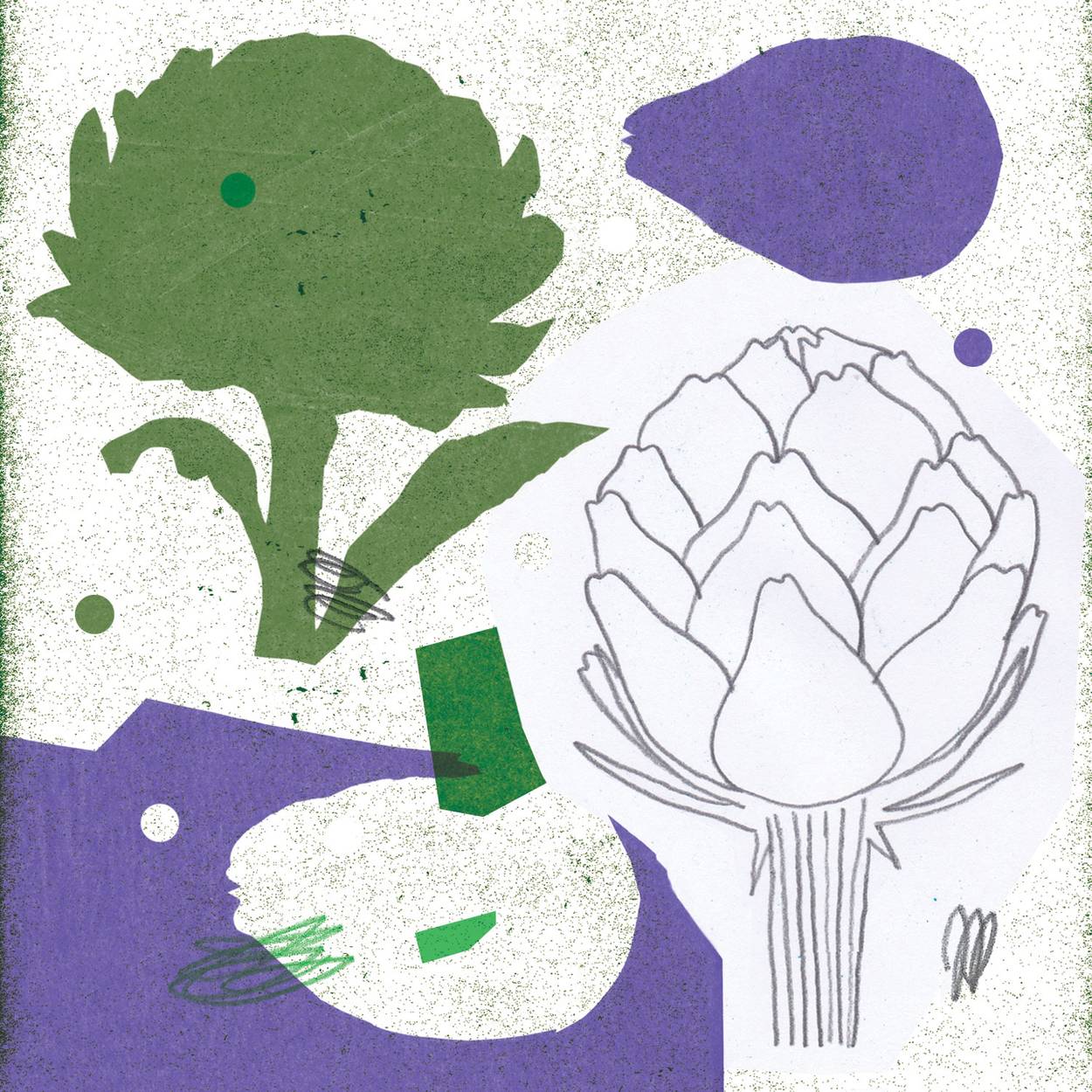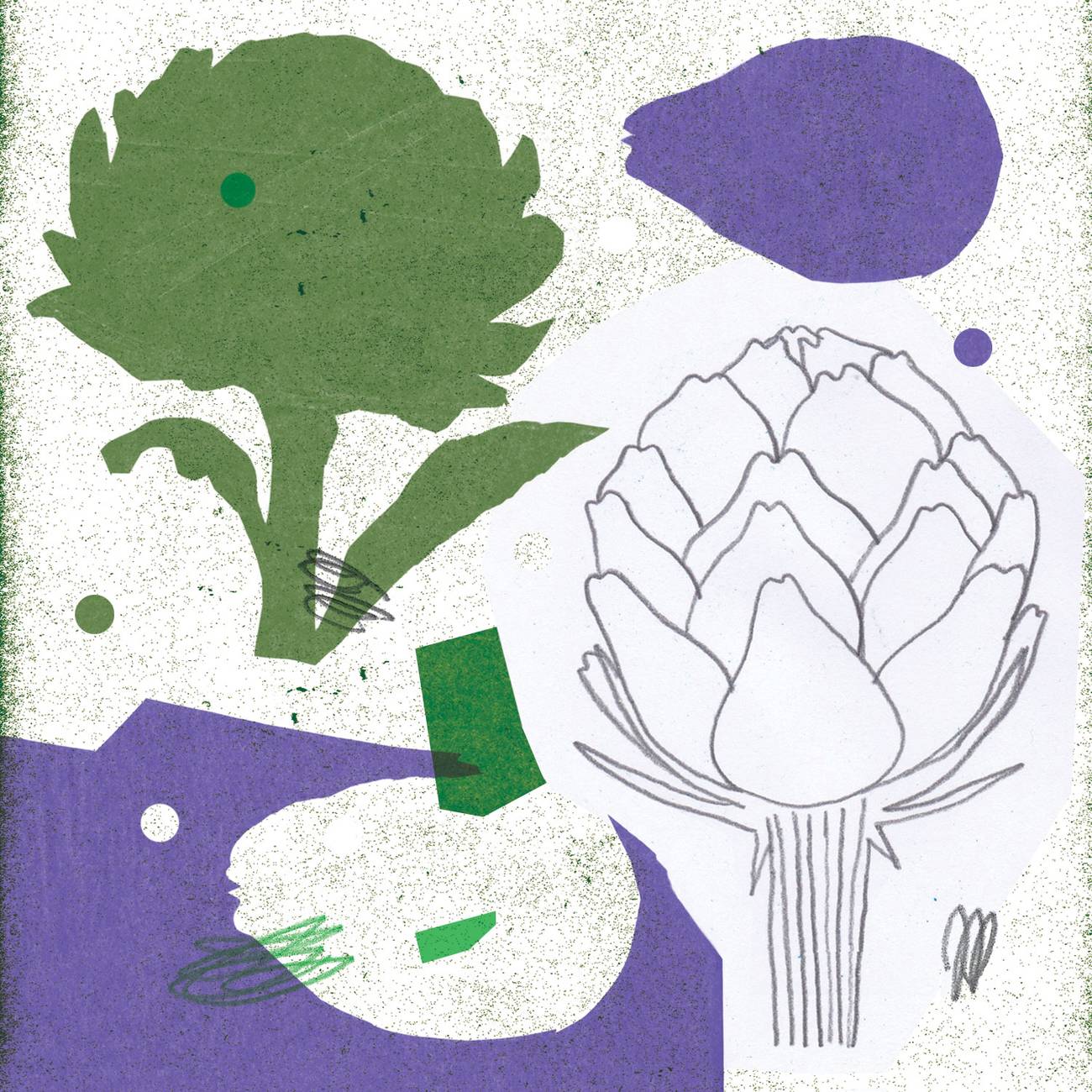You Gotta Have Hearts
The delicious history of the artichoke




You may not think of artichokes as a Jewish vegetable, but they have been eaten by Jews for centuries. According to the Mishna and the Talmud, the biblical kotz v’dardar (thorns and thistles) referred to before Adam and Eve left the Garden of Eden were cardoons (also known as artichoke thistles) and artichokes.
The globe artichoke (Cynara scolymus) has been consumed in the Mediterranean for more than 3,000 years. They were known to the Greeks and the Romans, who used them as an aphrodisiac, to aid digestion, and to improve liver function; they also believed artichokes could help women produce sons. The Greek physician Discorides—in his work The Greek Herbal of Discorides, which later was translated as De Materia Medica and became the most authoritative work on medicinal plants for the following 1,500 years—also recommended using the mashed root as a deodorant. Artichokes were known to the Roman naturalist and philosopher Pliny the Elder, who often joked that the aristocracy deprived the lower classes of this delicious vegetable.
Legend has it that the artichoke is named after a beautiful young girl named Cynara, who lived on the island of Kynaros and became the lover of the Greek god Zeus. Zeus was so taken with Cynara that he decided to make her a goddess, so she could live near him on Mount Olympus. But Cynara became homesick and briefly went back to the land of mortals for a short visit. When she returned, Zeus was so incensed that he threw her back to earth and transformed her into the beautiful plant we now call an artichoke.
In the past artichokes were often eaten by Italian Jews to end the fast of Yom Kippur. They were also traditionally eaten for Passover, as shown in two 14th-century Haggadahs that depict maror as an artichoke. The Talmud even recommends preparing artichokes (kinras) and cardoons (akavirot) for special occasions.
Today more than 40 varieties of artichokes are grown worldwide, mainly around the Mediterranean—especially in Italy, France, Egypt, and Spain—and of course in California, which produces most of the artichokes found in the U.S. There are two main categories of artichoke: the globe artichoke, like the Italian purple-tinged, thornless carcioforomanesco, which has been cultivated in Lazio since Etruscan times, or carciofo cimarolo sometimes called carciofo mammolo, which is used to make carciofi alla giudia; and the elongated artichoke, like the Sardinian carciofo spinoso di Menfi, a thorny, violet-topped artichoke cultivated in Melfi, which has PDO (protected designation of origin) status and is nicknamed spinello (“thorny bastard”) by the locals, and is usually braised or used in salads. In France the Camus de Bretagne—a gray-green globe artichoke from Brittany—is probably one of the most highly prized artichoke and is mainly used for steaming, while the small conical Violet de Provence is often eaten raw with a vinaigrette dressing and to make artichauts a la barigoule, artichokes simmered in olive oil on a bed of onions, shallots, and carrots.
When buying an artichoke, you should look for one that is firm to the touch and heavy for its size; you can always compare their weight with other artichokes of the same dimensions. A good artichoke should also have tightly packed leaves. Try to avoid any artichoke that has brown tips or loose, splayed, or spongey leaves. According to the rules of kashrut, you should remove some of their leaves and inspect them for insects before eating.
The simplest way of preparing an artichoke is to cut off the stem with a sharp knife then boil or steam until tender. The exact time will depend on the size of the artichoke. To test when an artichoke is cooked, simply pull away one the leaves from the bottom. If it comes away easily, then it is cooked. Serve hot or cold with a dipping sauce like a vinaigrette or aioli, or with melted butter flavoured with garlic.
Artichokes are rich in fiber, folate, vitamin C, vitamin K, antioxidants, polyphenols, and minerals, especially phosphorus, potassium, magnesium, and manganese. Artichoke extract is said to help reduce high blood pressure and help reduce LDL (bad) cholesterol. It is also thought to improve the health of your liver; relieve indigestion, heartburn, and bloating; and reduce the risk of some bowel cancers.
Paola Gavin is a food writer and author of four vegetarian cookbooks including Hazana: Jewish Vegetarian Cooking. Follow her on Instagram @paolagavin and on Twitter @paolagavinfood.